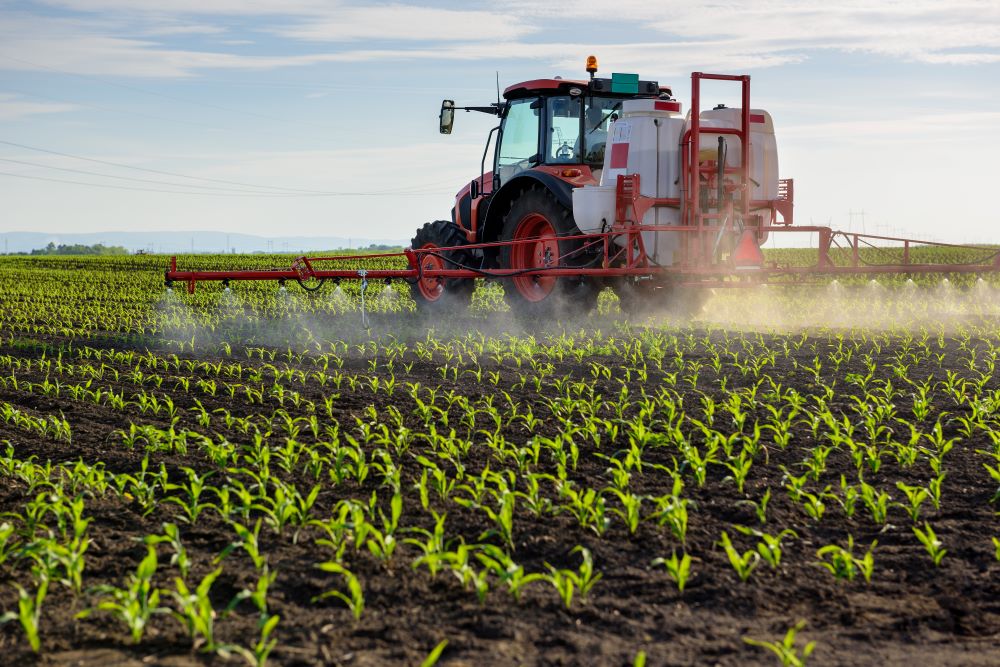
In the latest of the IOE&IT Daily Update’s series exploring global commodities we consider the ins and outs of the international market for fertiliser.
With the world’s population expected to exceed 9bn by 2050, more fertiliser will be needed than ever before to boost crop production enough to feed the growing number of people on the planet.
The fertiliser industry transforms millions of tonnes of air, natural gas and mined ores into plant nutrition products based on the ‘big three’ essential nutrients: nitrogen, phosphorus and potassium.
For nitrogen-based fertilisers, the largest product group, the process starts by mixing nitrogen from the air with hydrogen from natural gas at high temperature and high pressure to create ammonia. Approximately 60% of the natural gas is used as raw material, with the remainder employed to power the synthesis process.
Price inflation
The soaring price of gas in the past year has been one of the main reasons fertilisers have become more expensive for farmers. In December, AHDB was reporting that the price of fertilisers was up by 139% year-on-year.
Across Europe and in many other countries, much ammonium nitrate manufacturing capacity was mothballed in 2022 as the level of gas prices made it unviable to operate.
In the UK, the government had to step in to support CF Industries, the UK’s only producer, as gas prices made fertiliser production similarly unviable.
Despite the support, CF has closed its ammonia plant due to high gas costs and will only continue to make ammonium nitrate fertiliser using imported ammonia.
Ukraine effect
Prices are now going down, but they remain inflated, not least due to Russia’s invasion of Ukraine, which has further disrupted the market.
Fertiliser prices may remain elevated at least in the near-term. Urea is a key fertiliser nutrient and urea prices surpassed their 2008 peaks, while prices for other nutrients, such as phosphates and potash, are close to 2008 levels, according to the World Bank’s Commodity Markets Outlook.
The outbreak of war on 24 February 2022, further drove up prices that were already high, as Russia and Belarus are important producers of all three major nutrients.
In 2020, Russia accounted for 14% of global trade in urea and 11% of trade in phosphate, while jointly Russia and Belarus accounted for 41% of global trade in potash, according to the International Food Policy Research Institute.
As well as higher natural gas prices reducing ammonia production, China, the largest producer of nitrogen and phosphorus, imposed export restrictions to cater to domestic demand further fuelling inflation. Poorer countries have been particularly hard hit.
The fact that a small number of countries produce a large share of internationally traded fertilisers makes the sector vulnerable to trade shocks.
Fertiliser exports from Russia have been an area of contention within the EU, with some eastern European countries arguing against easing sanctions to release fertiliser on to world markets, where others see it as a necessary evil.
Russia produces about 30% of the world’s fertiliser requirements and while the UK banned vessels with Russian flags after the war began in February 2022, fertiliser was not a sanctioned product.
Growing use
In 1965, the consumption of nitrogen fertilisers stood at some 46.3m metric tonnes (mt). By 2020, this amount had increased to over 200m mt.
And by 2020, nitrogen fertilisers accounted for around 56% of the total global consumption, whereas phosphate and potash fertilisers stood at 24% and 20%, respectively.
Asia dominates the market and has experienced a big increase in fertiliser use since the 1960s. In 2019, East Asia and South Asia were the two regions with the highest fertiliser consumption worldwide, using 63.4m mt and 35.1m mt, respectively.
Global fertiliser production
The global volume of urea production reached 179.8 million mt in 2022.
And total global fertiliser production saw similar production volumes for phosphorous-based fertilisers, diammonium phosphate (DAP) and triple superphosphate (TSP); and potassium-based fertiliser, such as muriate of potash (MOP).
There are concerns that the massive production and consumption of fertilisers pose serious environmental and social challenges, including water pollution, greenhouse gas emissions, soil degradation and food insecurity.
Finding sustainable and innovative solutions for fertiliser management is crucial for ensuring the long-term well-being of both humans and nature.
Recent trends
The Guardian reports that data from the Department for Environment, Food and Rural Affairs (Defra) revealed that for key crops – wheat, barley, oilseed rape and sugar beet – fertiliser use in 2022 decreased by an average of 27%, compared with the 2010-19 average. Despite this, yields of those crops were 2.4% above average compared with the same period.
Fertiliser prices almost tripled, from £233 a tonne in 2020 to £766 a tonne in 2022, which farmers say led to a reduction in their use.
The leading fertiliser exporting countries worldwide in 2022, based on value (in $USbn), were:
Canada 13.72
China 11.38
US 8.47
Morocco 7.69
Belgium 4.57
Netherlands 4.17
Israel 3.07
Germany 2.44
Spain 2.16
Poland 1.93
The biggest importers of fertilisers in 2021 were:
Brazil 15.2
US 10.3
India 9.1
France 2.8
China 2.77
Australia 2.5
Thailand 2.3
Argentina 2.28
Canada 2.21
Indonesia 2.2

